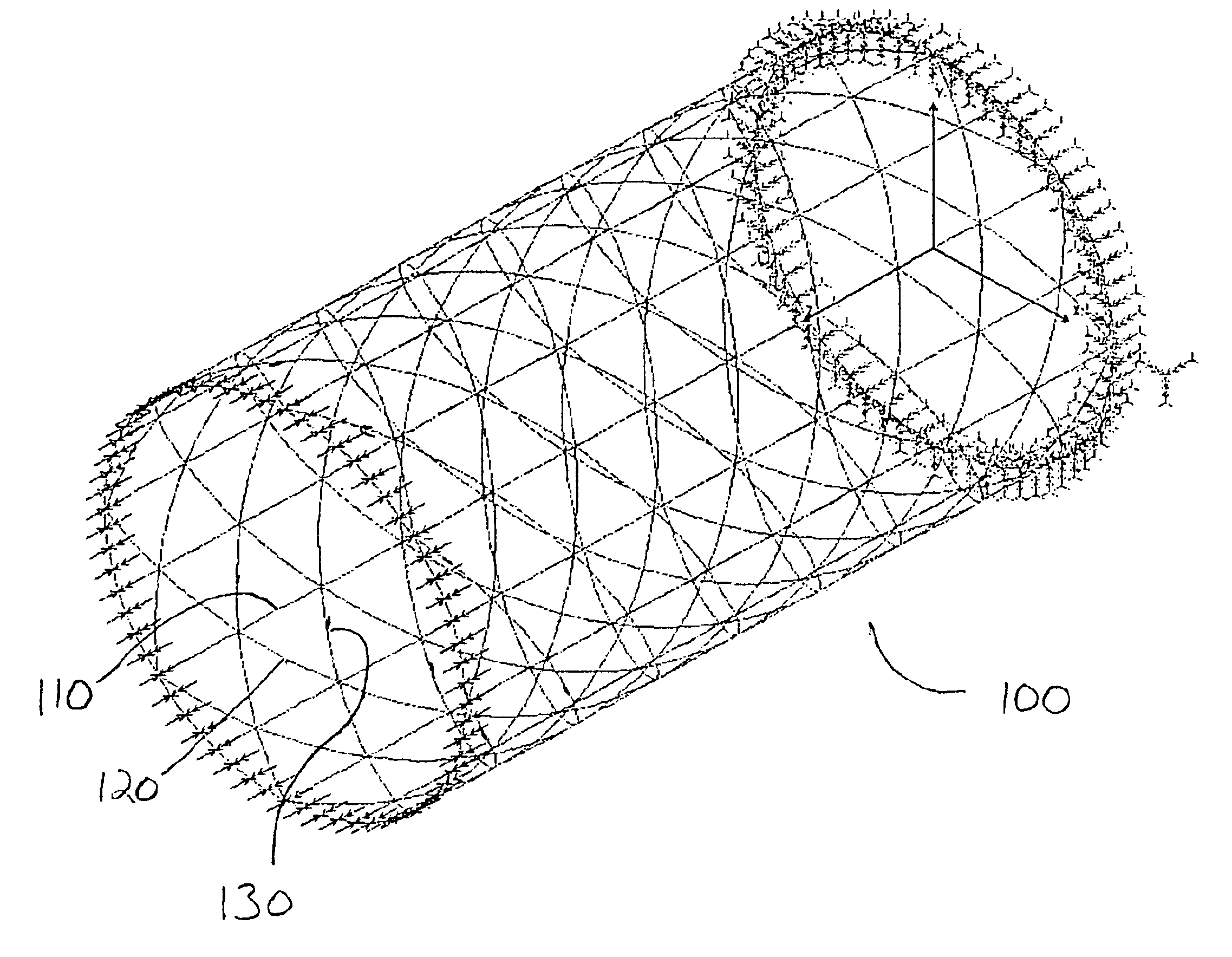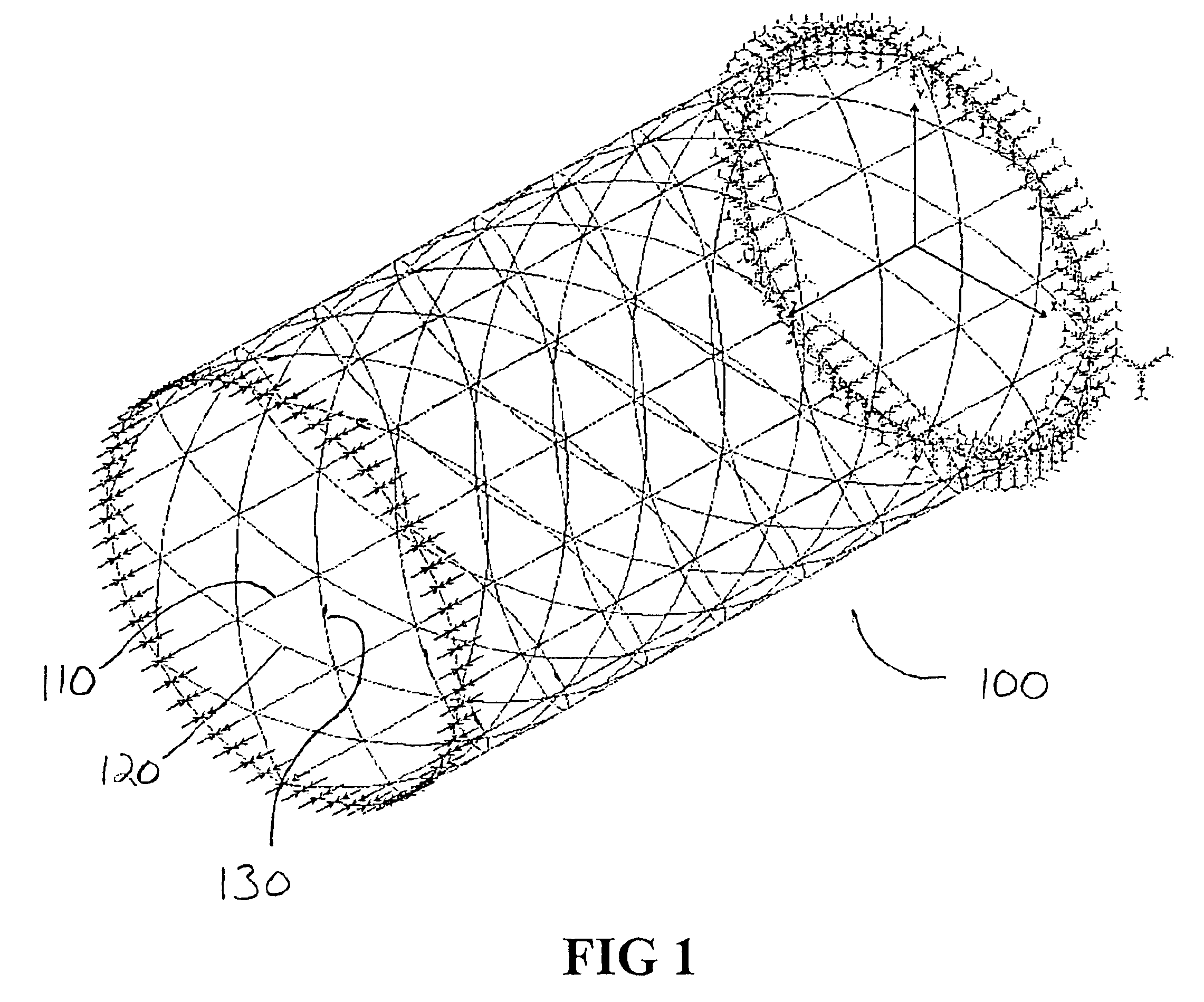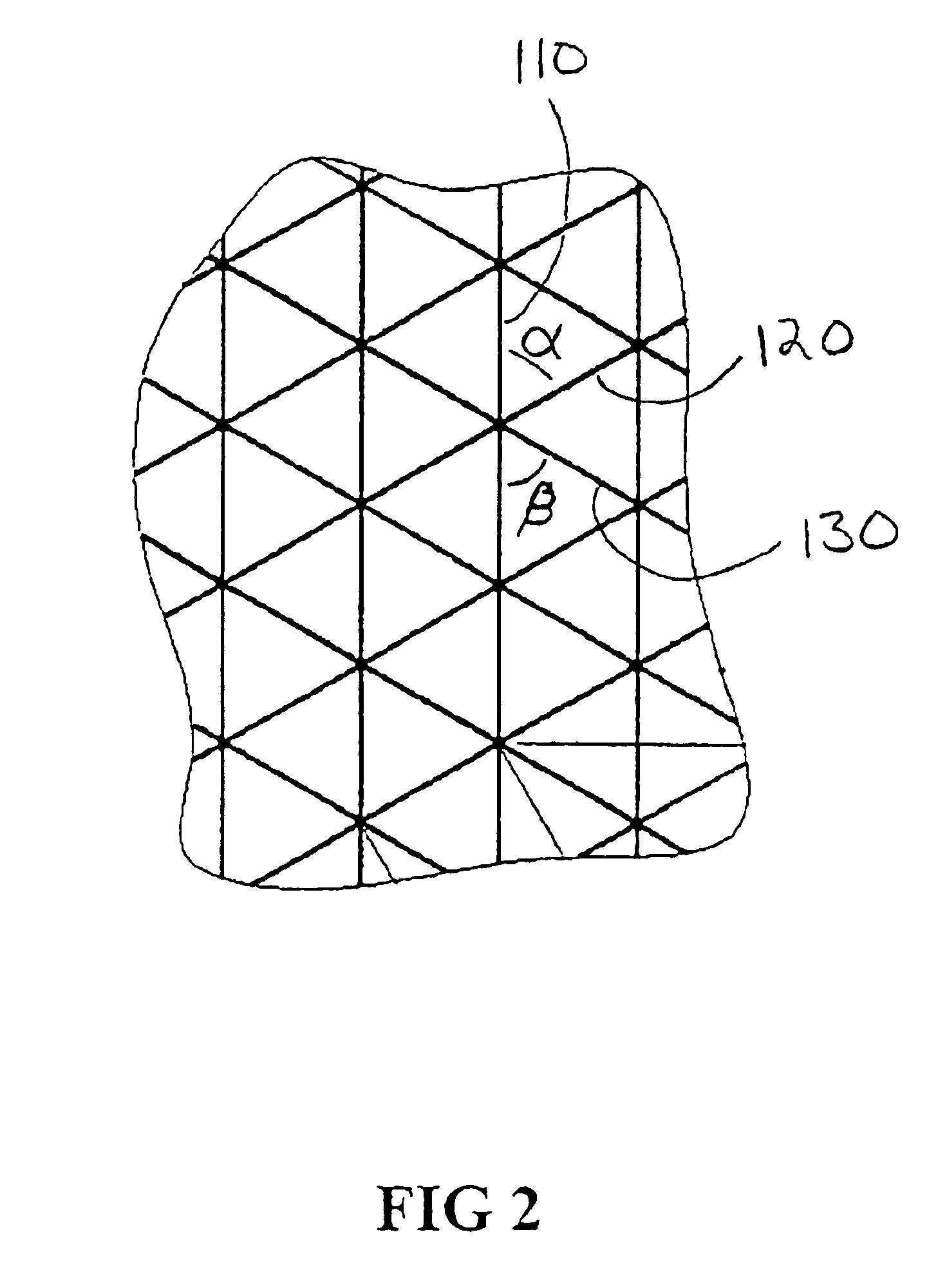Inflatable rigidizable boom
a rigidity and boom technology, applied in the field oftruss structures, can solve the problems of increased system launch costs, increased launch vehicle size and mass, and inability to efficiently pack structures for transport, etc., and achieve the effect of facilitating inflation
- Summary
- Abstract
- Description
- Claims
- Application Information
AI Technical Summary
Benefits of technology
Problems solved by technology
Method used
Image
Examples
Embodiment Construction
[0021]The preferred embodiment of the invention is a result of the need for a load carrying structure that is capable of being packaged into a reasonably small volume and can be deployed on command, to regain its original shape. Since the matrix can be softened for packaging, the boom is foldable around a very small radius without damage to achieve a bend ratio (fold radius to material thickness) of less than 3. The deployed volume to packed volume ratio achieved by this methodology of material selection, manufacturing and packing is 28 or higher indicating a high packing efficiency. The boom is a cylindrical, isogrid structure that has quasi-isotropic properties. It is a composite system, which is composed of a high modulus fiber / resin that can be folded and stored for a considerable length of time and when required, is deployed via a simple inflation system to form a rigid structure. The boom may then be rigidized by providing heat energy, exposure to the chemical constituents of ...
PUM
 Login to View More
Login to View More Abstract
Description
Claims
Application Information
 Login to View More
Login to View More - R&D
- Intellectual Property
- Life Sciences
- Materials
- Tech Scout
- Unparalleled Data Quality
- Higher Quality Content
- 60% Fewer Hallucinations
Browse by: Latest US Patents, China's latest patents, Technical Efficacy Thesaurus, Application Domain, Technology Topic, Popular Technical Reports.
© 2025 PatSnap. All rights reserved.Legal|Privacy policy|Modern Slavery Act Transparency Statement|Sitemap|About US| Contact US: help@patsnap.com



